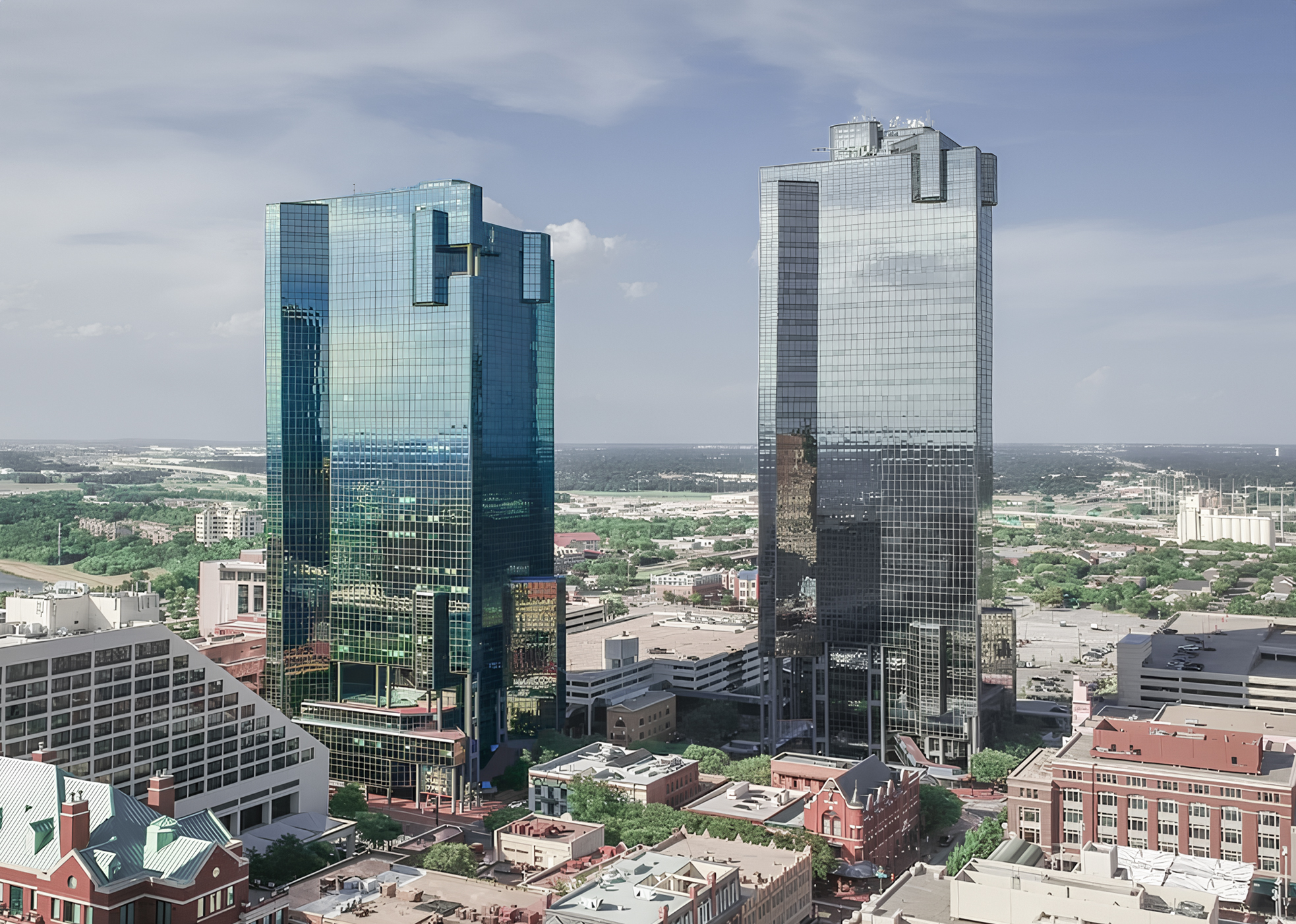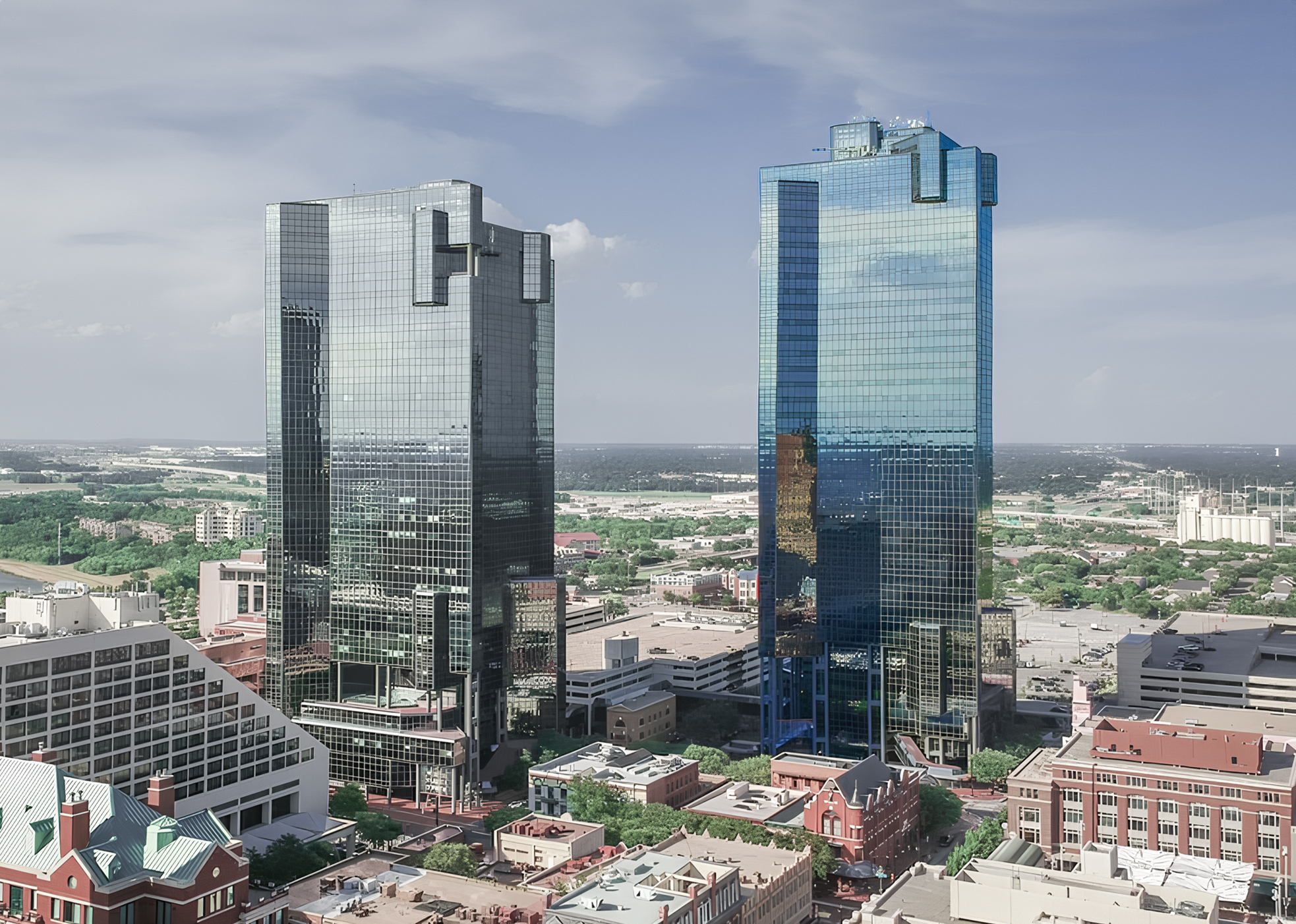The Wells Fargo Tower is a Postmodernist skyscraper designed by Paul Rudolph, in association with 3D/International, and built between 1978 and 1982 in Fort Worth, TX.
Wells Fargo Tower is not the only name you might know this building by though. It is common for companies to want to attach their names to iconic buildings when they move in, or for the general public to come up with nicknames, and this one is no exception. The Wells Fargo Tower is also known, or has been known as, City Center I, or Chase Texas Tower.
Its precise street address is 201 Main Street, Fort Worth, TX. You can also find it on the map here.
In 2011 the Wells Fargo Tower was awarded with the 25 Year Honor Award.
Together with the Bank of America Tower the Wells Fargo Tower completes what's known as the City Center Tower Complex. Even though each tower sits on a different block, they were both designed as one joint project and are connected by two skywalk bridges to the parking building, which they share and takes up another two blocks of the city grid.



